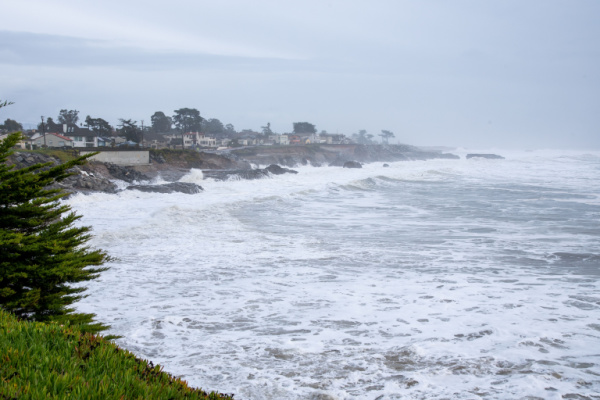The deadly bomb cyclone that crashed into California last week will not be the end of dangerous storm conditions, with the state rushing to recover before another round of potentially damaging rain and winds make their presence felt. Governor Gavin Newsom has already declared a State of Emergency to help release crucial funding and resources to the affected areas.
As AccuWeather reports, storm impacts, which are expected to be evident beginning Sunday evening through Tuesday, include life-threatening flooding, landslides, extensive property damages and risks of dam or levee failures. Anticipating another round of troubling weather, officials in the state are focusing on preparing for the incursion while taking stock of what damages have already been done.
“What we’re doing right now is using our latest technology to do a clean sweep of California to see what did this past wet weather did to us as a state, and then how can we anticipate resources, sending them to areas that are needing them the most,” Diana Crofts-Pelayo, Assistant Director of the California Office of Crisis Communication and Public Affairs, told AccuWeather.
One of those areas will be Santa Cruz County, where Director of the Office of Response, Recovery and Resilience David Reid said damages from the last storm are “pretty significant.” The threat of landslides in the county forced the evacuation of homes last Wednesday, while floodwaters from surging ocean waves came into nearby roads and moved perilously close to homes in beachside areas.
“Around the county we’ve had impacts from landslides and debris flows, we’ve had our coastal impacts that a lot of folks have seen on social media, and we’ve had some flooding in our south county area impacting hundreds and hundreds of residents already,” Reid told AccuWeather.
In the Santa Cruz County town of Aptos, a wave crashed into a pier, sending the structure into the sea. Rough surf also devastated a village in the county’s city of Capitola. Chain link fencing was set up Friday in the village to protect businesses facing the ocean, with a local reporter remarking that the damage has been “unbelievable.”
Before the next round of storms begin to hit, the county’s focus is on clearing drainage systems and infrastructure of debris, with vast amounts of rain expected to hit the drainage systems once again. The county’s other focus is on livelihood, after two fatalities were reported in California on Wednesday during the bomb cyclone event. A 19-year-old woman from Fairfield, California, was killed when her car hydroplaned on a partially flooded road and crashed into a utility pole, and a 1-year-old was killed in Sonoma County when a redwood tree fell on a mobile home.
Experts describe bomb cyclones as storms that typically form in winter when a midlatitude cyclone undergoes “rapid intensification” at speeds of at least 24 millibars, the measure of atmospheric pressure, over a 24-hour period. Conditions for this rapid intensification often result when a cold and warm air mass collide, which is precisely what is occurring over the Pacific with this latest storm, according to Daniel Swain, a climate scientist with UCLA.
“This is a textbook mid-latitude cyclone, with well-defined warm and cold fronts, and it’s even developing an eye-like feature near its center,” Swain says. “A “bomb cyclone” refers directly to the rate of strengthening, not necessarily to its absolute strength. It has been found that the presence of nearby atmospheric rivers can actually enhance the rate of strengthening of low-pressure systems, so that is likely part of what’s going on here.”
“We want to make sure that people remain prepared to evacuate, aware of our alert warning systems that are out there, be ready to respond if we need to get you out of harm’s way,” Reid said. Commenting that the state hasn’t seen storm damage such as this prior week’s “in a long time,” Crofts-Pelayo stressed the serious nature of the situation as storms prepare to roll in yet again.
“If we were on the East Coast, folks would liken this to hurricane preparation … we want them to know that this is no joke, we want them to stay off the roads if they start seeing really intense rain or wind, and just to ensure that their family is safe,” she said.
Wind damages were noted as the primary cause in a startling rise in power outages Sunday morning, particularly in the state’s capitol area. In Sacramento County, more than 300,000 customers were without power in the overnight hours, with state outages topping 500,000 after being under 50,000 Saturday afternoon, per PowerOutage.US.
Outages will be another concern, with Crofts-Pelayo urging residents to have emergency food and water resources available in case of a long-term outage, as well as having access to flashlights.
—
Photo Credit: Rosangela Perry / Shutterstock.com
